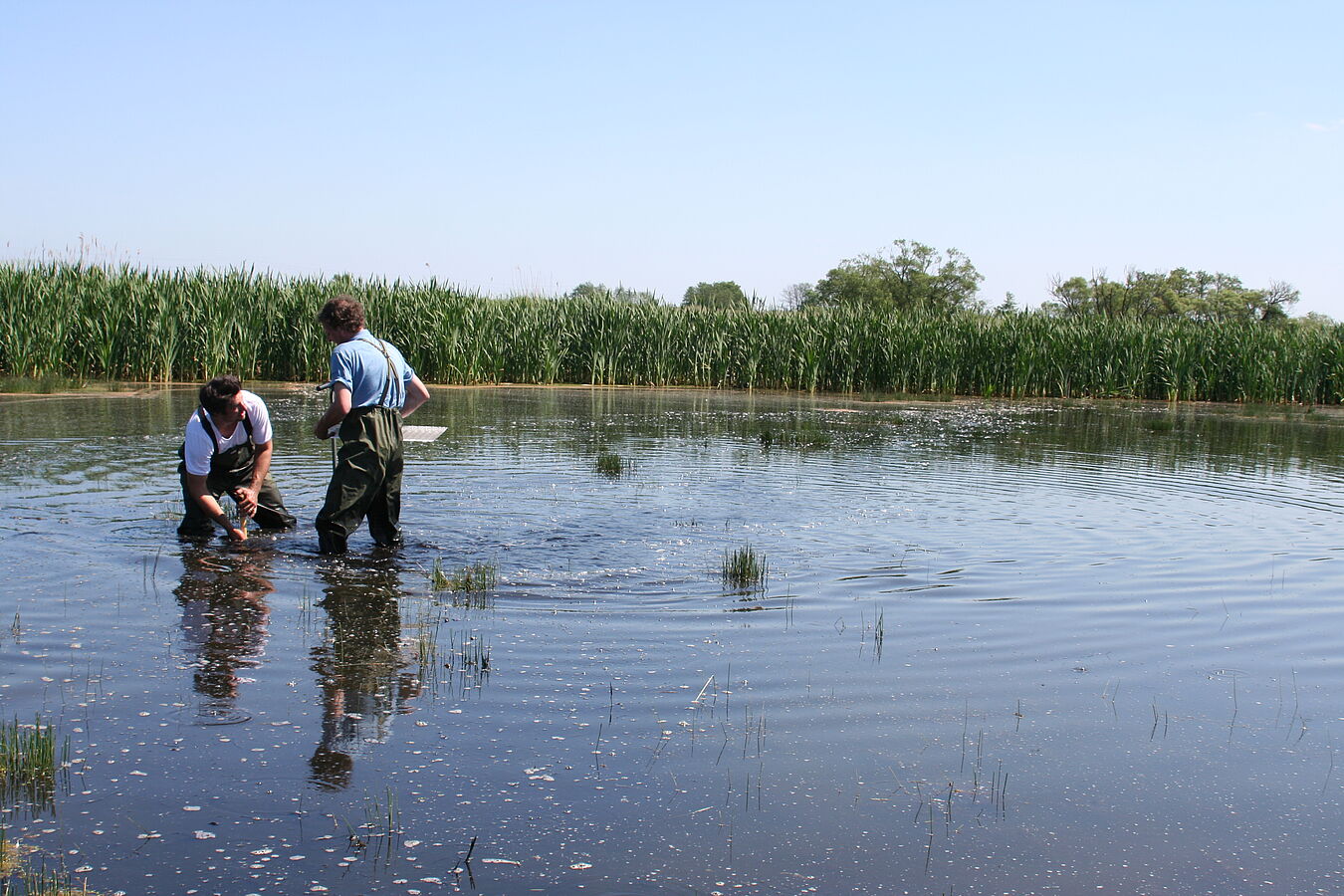Researchers from HU Berlin and IGB have shown in the laboratory that fen soil can reduce the iron and sulphate contamination of mine water by over 80 percent.

Rewetted peatlands are important ecosystems, sinks for carbon and they strengthen the retention of water in the landscape and can clean up acid mine drainage. | Photo: IGB
The pollution of groundwater and surface waters with sulphate and iron from acid mine drainage is a worldwide problem in post-mining landscapes. Researchers from HU Berlin and IGB have shown in the laboratory that fen soil can reduce the iron and sulphate contamination of mine water by over 80 percent.
During and after lignite mining, excavated material containing pyrite reacts with oxygen and water to form sulphuric acid and dissolved iron. Sulphate and iron compounds as well as an acidic pH value are the factors that make mine drainage a source of pollution for water bodies. There are numerous technical solutions for treating acid mine water, but they are often costly and difficult to implement. The post-mining landscape in Lusatia, Germany, which ist highly loaded by acid mine drainage is an example of the limits of treatment technologies. There, high concentrations of iron and sulphate are found in rivers - such as the Spree - lakes and aquifers. Different punctual treatments did not improve water quality.
Why could peat soil remove sulphate and iron?
Nature-based solutions in the landscape have been little explored. Rewetting peatlands could be an effective measure. "Under oxygen-free conditions, pyrite should ideally be re-formed in water-saturated peatland soils and iron and sulphur should be removed at the same time, eventually preventing renewed pyrite oxidation. Compared to other organic substrates, however, it was previously unclear to what extent the decomposed peat from the upper soil layers of drained peatlands is suitable," explained Lydia Roesel from HU-Berlin, the first author of the study.
Iron and sulphate concentrations reduced by about 80 % each in the laboratory experiment
In the laboratory experiment, the researchers simulated the rewetting of peatland with acid mine water. They then quantified the iron and sulphate removal and the pH changes at different loading rates. The initial low pH of 4 increased to 6, and the electrical conductivity dropped by up to 47 per cent. The conductivity of the water is a measure of the particles dissolved in the water and thus, in freshwater, also an indicator of the quality of the water. The initially high concentrations of iron (more than 250 milligrams per litre) and sulphate (more than 770 milligrams per litre) fell on average by 87 and 78 per cent respectively.
"The results imply that microbial degradation of sulphate and subsequent precipitation of iron sulphides was the most important mechanism in reducing pollution," explained Dominik Zak, guest scientist at IGB and scientist at the Danish University of Aarhus. The lower the hydraulic or material load, the more sulphate was removed. The hydraulic load determines the retention time and the higher it is, the shorter the contact time of the mine water with the peat substrate.
Example Spree: The rewetting of peatlands in mining regions could drastically reduce sulphate loads
The rewetting of peatlands would thus be an effective measure to reduce pollution from acid mine drainage. For the heavily polluted section of the Spree studied, the researchers were able to estimate on the basis of the rewetting experiment and extensive field data that a reduction in the river's sulphate load of about 20 per cent (36,827 tonnes per year) would occur if all the peatlands in the sub-catchment were rewetted. This would be 6067 hectares and would correspond to 6.7 percent of the total area.
"Our results show once again that the rewetting of peatlands is an important measure for the protection of our environment. Peatlands stabilise the global carbon balance, they keep water in the landscape and also have an important purification function," said Lydia Roesel.
Future research into why pollutant degradation is slowing down and how mine water affects peatlands
The researchers emphasise that the laboratory experiments cannot be easily transferred to large-scale field conditions.
"In the future, it needs to be investigated whether pollutant degradation in decomposed peat layers decreases over time due to acidification or the lack of bioavailable carbon - or both - and how rewetting with acid mine drainage affects the restoration of the important further functions of peatlands in the long term," said Dominik Zak.






